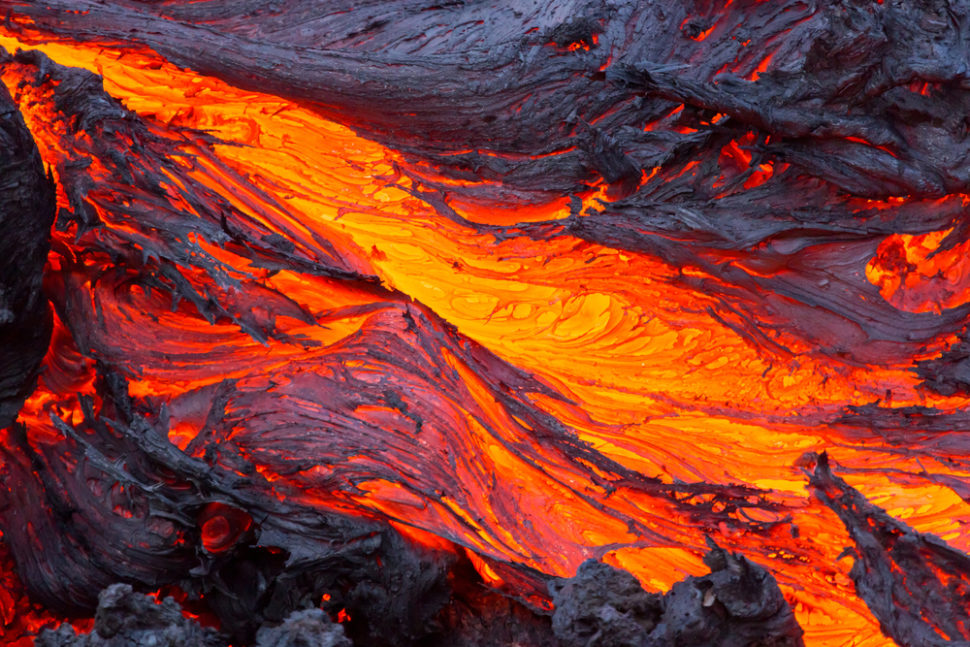Magma retains its name until it reaches the Earth’s surface to be called lava.
With temperatures as high as 1,300 degrees Fahrenheit, magma is a molten rock mix containing other solids, gases, and volatile chemicals. In other rarer cases, like with komatiite magma, the temperature can reach over 1,300 degrees F.
This scalding and highly viscous liquid lying deep underground may collect in magma reservoirs or chambers that feed volcanoes. Sometimes these molten liquid rocks get ejected by volcanic eruptions to flow onto the surface.
Other than Earth, scientists also believe that magma is present in other rocky planets and moons as well.
About 1,800 miles (2,900 kilometers) thick, Earth’s mantle makes up 84% of the planet’s total volume. Yet it remains understudied because it’s hard to reach.
But now, diamonds deep within the surface of our planet may hold some clues.
Deep Magma Reservoir of Primordial Secrets
Beneath Earth’s outer crust and above the core, lies the mantle. A layer of our planet thought to be made of solid rock.
For long, geologists have suspected the mantle may contain an isolated pocket of a primordial magma reservoir. Now, an international team of earth scientists has confirmed that using superdeep diamonds.
As the toughest gemstones ever, diamonds may be the survivor messengers from Earth’s deep interiors.
“Diamonds are the hardest, most indestructible natural substance known, so they form a perfect time capsule that provides us a window into the deep Earth,” says Suzette Timmerman from Australian National University.
Researchers measured microscopic helium isotopes contained in superdeep diamonds brought to the surface by violent volcanic eruptions. Their analyses revealed that this gas originates from an ancient magma reservoir.
The idea of a primordial magma reservoir has been around since 1980 when geochemists noticed that some basalt lavas had a ratio of helium 3 to helium 4 isotope higher than expected.
The said ratio was similar to those usually found in ancient meteorites that crashed into Earth billions of years ago.
This led the researchers to conclude that the lava came from some primordial magma reservoir deep beneath the Earth’s surface. A lake whose isotopic composition remained basically unchanged for the last 4 billion years
The team looked at what they call superdeep diamonds, formed between 230 and 800 km below the Earth’s crust, that are “recognizably different” from most diamonds that are created between 150 to 230 km deep.
“From the geochemistry of [these superdeep diamonds], we know that they formed in an area called the ‘transition zone,’ which is between 410 and 660 km below the surface of the Earth. This means that this unseen reservoir, leftover from the Earth’s beginnings, must be in this area or below it,” said the researchers.
Still, the team has a lot of questions about this ancient magma reservoir that need answers. Questions like:
What’s the form of this reservoir and its size?
Is it a sizeable single reservoir, or a system of smaller connected pools?
What’s the reservoir’s exact location in Earth’s mantle?
Right now, the answers remain buried beneath our feet, waiting for scientists to make a move.



















Comments (0)
Least Recent